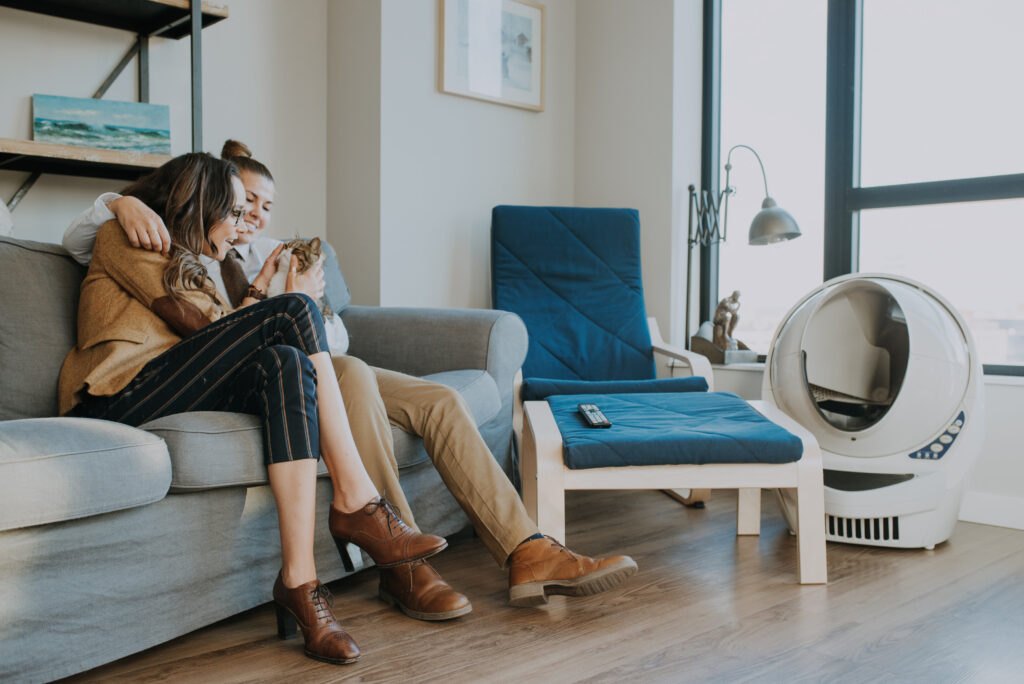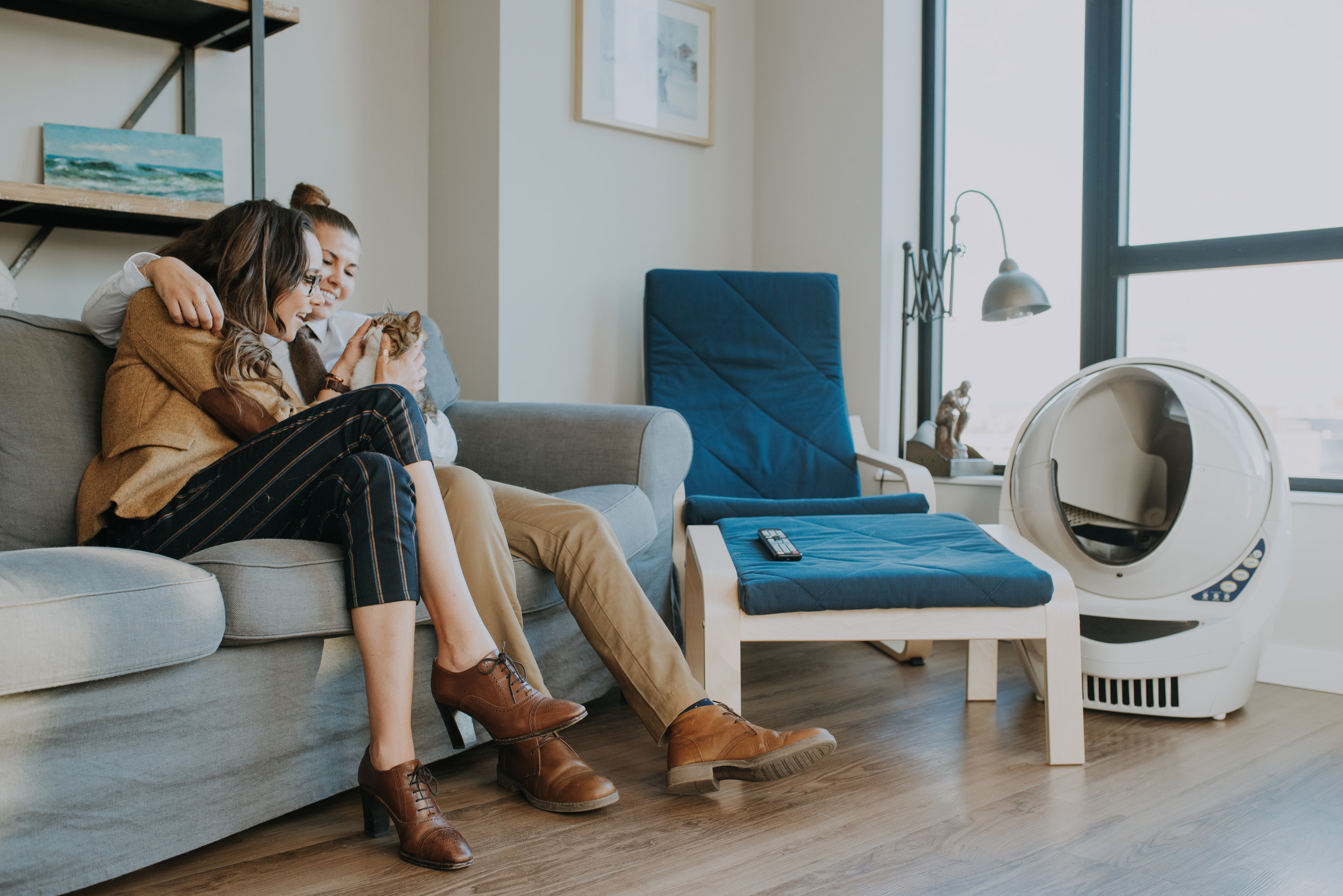Spring Fever: 5 Ways To Reduce Cat Allergies At Home

Is your new GF allergic to cats? Don’t worry! We’ve got all the expert tips!

So you and bae are U-hauling it. Congratulations! There’s just one potentially earth-shattering problem: Her cat allergies.
You love her. You love your cat. What’s a girl to do?
First, get educated about your options to relieve allergies in the home. Some people jump straight to loading up on antihistamines; others resign themselves to a weekly visit to the allergist. Instead, consider a few household tricks to reduce cat allergens before it even becomes necessary to treat those miserable symptoms.
So why do some of us start sporting a runny nose, itchy eyes, and a cough, among other unpleasant side effects, as soon as we’re in the vicinity of a feline? You may have heard that your cat’s dander, saliva, or urine is the cause of allergy symptoms. Actually, it’s all of the above — and it’s not the dander or substance itself that you’re reacting to, but a specific pet allergy-producing protein in them.
Combating something as ambiguous as a protein might sound intimidating, but luckily there are a few ways to work around those pesky allergens. Keep in mind that fighting cat allergies is often an ongoing battle — but it’s so worth it to share your heart and home with a furry friend!
1. Create a Feline-Free Zone
Fake fur and a frisky girlfriend in the bedroom is hot. Real fur and Friskies kibbles in the bedroom is not. As hard as it is to deny your cat free rein, restricting access to the bedroom or other designated areas of the house is the first step to reducing allergy symptoms.
Once you’ve closed the door on your cat’s withering stare, start cleaning: Ignore no part of the room, including the floors, the walls, the bedding, the drapes, the ceiling fan… you get the idea. The hope is to erase any lingering evidence of your furbaby (save for those adorable framed photos). You might even consider replacing your bedding and drapes for a fresh start. And if you’re very serious about reducing the chances of developing cat allergy symptoms, invest in plastic or allergen-proof covers for your pillows and mattress.
2. Wash, Wash, Wash
And then wash some more. If you decide not to make your bedroom kitty-free, you’ll want to wash all of your bedding in hot water at least twice a month. It’s also a good idea to purchase washable pet bedding and throws for elsewhere in the house, plus washable slipcovers for your furniture. Change your bathroom towels often.
The most important washing of all? Your hands. Just think about how often you pet your cat or come in contact with a surface covered in his, um, protein — then think about how many times an hour you touch your face.
No wonder it adds up to puffy eyes and congestion! If you’re curious as to whether there’s a correct way to wash your hands, there is: Wet your hands with clean, running water (warm or cold), turn off the tap, and apply soap; lather your hands with soap, including the backs of your hands, between your fingers, and under your nails, for at least 20 seconds; rinse your hands well under clean, running water; and dry them using a clean towel.
3. Upgrade the Litter Box
Dealing with the litter box is arguably one of the few downsides to owning a cat. Teeming with a combination of urine, dust, and dander, the litter box is also the perfect breeding ground for allergy attacks.
There are a couple ways to improve the litter situation. The less ideal one is to move the litter box as far away from you as possible, like in the basement or garage, and use a low-dust formula litter.
Then there’s the Litter-Robot—it’s an automatic, self-cleaning litter box, which means you never have to scoop cat waste again. The Litter-Robot has a patented sifting process that automatically separates the waste from the litter and deposits the clumps into a waste drawer for easy disposal. It’s also WiFi-enabled, so you can use the Connect app to remotely monitor and control the litter box, plus view the waste drawer level, get notifications, and see complete usage history for insights into your cat’s health.
“Paws” for a second and let that sink in: never scoop litter again.
4. Use HEPA Filters and Get Steamy
Carpets and upholstery fabrics accumulate far and away the most cat allergens, so you might want to think about U-hauling it to a place with hardwood flooring. If that isn’t an option, however, invest in a HEPA filter or steam cleaner.
While regular vacuums probably won’t do much besides blow around allergens, those with high-efficiency particulate air (HEPA) filters will trap the tiny allergy-producing proteins found floating around the house. Likewise, standalone HEPA purifiers will effectively filter out dust mites and dander in a given area. In addition to the HEPA filter, use a vapor steam cleaner on your carpet and upholstered furniture as often as possible.
5. Wipe Down Your Cat Daily
Treat the problem, not the symptoms. But how? (Heeeere kitty, kitty, kitty…)
Remove saliva and visible dander from your cat’s coat by wiping him down every day. This will be far less traumatic for him (and you) than attempting a daily washing in the tub. Use fragrance-free, hypoallergenic baby wipes or ask your vet to recommend a specific cat-friendly brand. The wipedown may still be an upsetting experience for your cat, so be sure to give him some treats or catnip afterward as a reward for being such a good sport.
Try these tips to reduce cat allergies at home. You, your girlfriend, and your cat will all get along a little better with everyone breathing properly. And if you’re thinking about adopting a cat, consider going the low-allergen route—check back next month when we cover hypoallergenic cat breeds!












